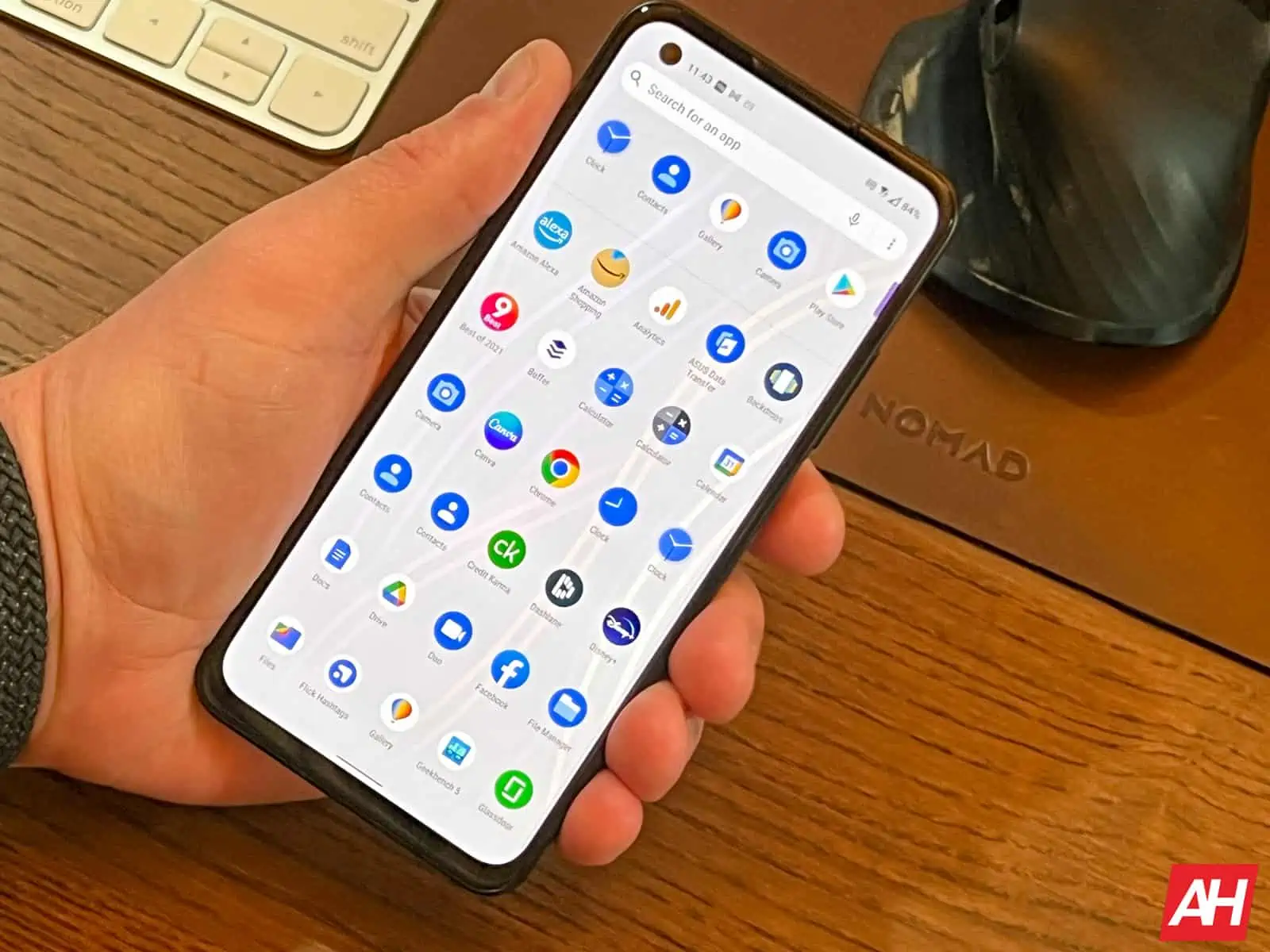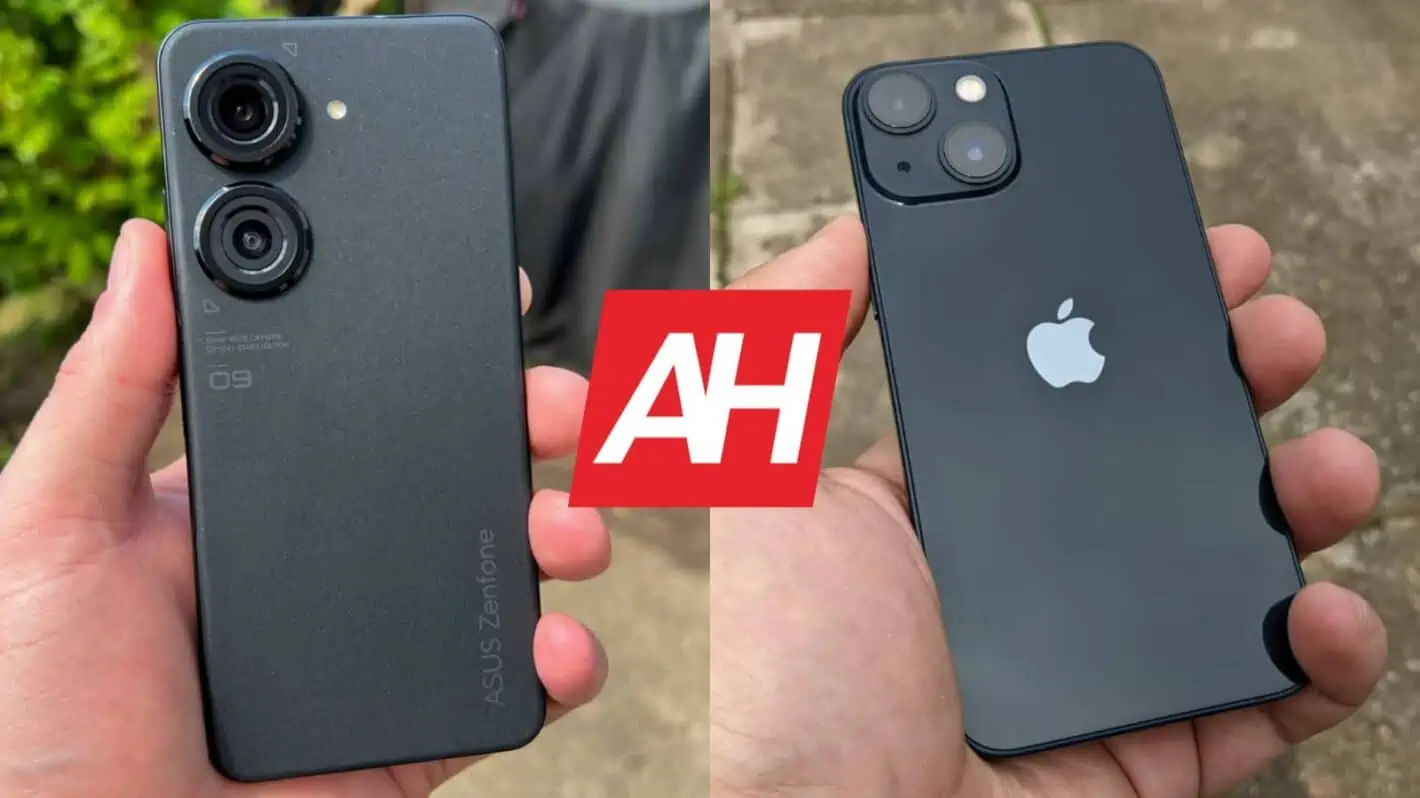There are not many phones in the Android ecosystem that are as compact as the iPhone 13 Mini, and also offer a lot of power. The ASUS ZenFone 9 is one of the best examples, though. In this article, we’ll compare the ASUS ZenFone 9 vs Apple iPhone 13 Mini. Do note that the ZenFone 9 is larger than the iPhone 13 Mini, but it’s still quite compact, especially considering everything else that is available on the market these days.
The iPhone 13 is closer to the ZenFone 9 size-wise, but still, comparing these two phones makes a lot of sense. If you’re an iPhone 13 Mini user but are looking to switch to Android, the ZenFone 9 may be your best bet. We’ll first list the spec sheets of these two phones, and will then compare them across a number of categories. We’ll compare their designs, displays, performance, and so on. Let’s get started.
Specs
| ASUS ZenFone 9 | Apple iPhone 13 Mini | |
| Screen size | 5.9-inch FullHD+ Super AMOLED display (60-120Hz refresh rate) | 5.4-inch fullHD+ OLED display (60Hz) |
| Screen resolution | 2400 x 1080 | 2400 x 1080 |
| SoC | Qualcomm Snapdragon 8+ Gen 1 | Apple A15 Bionic |
| RAM | 8GB/16GB (LPDDR5) | 4GB |
| Storage | 128GB/256GB (UFS 3.1), non-expandable | 128GB/256GB/512GB, non-expandable |
| Rear cameras | 50MP (f/1.9 aperture, 23.8mm wide-angle lens, 1.0um pixel size, gimbal OIS, PDAF) 12MP (f/2.2 aperture, 113-degree FoV, 1.4um pixel size, 14.4mm lens) |
12MP (f/1.6 aperture, 1.7um pixel size, 26mm lens, dual pixel PDAF, sensor-shift OIS) 12MP (f/2.4 aperture, 120-degree FoV, 13mm lens, ultrawide) |
| Front cameras | 12MP (f/2.5 aperture, 1.22um pixel size, 27.5mm lens, dual pixel PDAF) | 12MP (f/2.2 aperture, 23mm wide-angle lens) |
| Battery | 4,300mAh, non-removable, 30W wired charging (charger included) | 2,438mAh, non-removable, 20W fast battery charging, 15W MagSafe wireless charging, 7.5W Qi wireless charging |
| Dimensions | 146.5 x 68.1 x 9.1mm | 131.5 x 64.2 x 7.7mm |
| Weight | 169 grams | 141 grams |
| Connectivity | 5G, LTE, NFC, Bluetooth 5.2, Wi-Fi, USB Type-C | 5G, LTE, NFC, Bluetooth 5.0, Wi-Fi, Lightning |
| Security | Side-facing fingerprint scanner | Face ID |
| OS | Android 12 ZneUI |
iOS 15 |
| Price | €799 | $699 |
| Buy | ASUS | Apple |
ASUS ZenFone 9 vs Apple iPhone 13 Mini: Design
These two phones both look different, and feel different in the hand. The ZenFone 9 comes with a frame made out of metal, and a polymer (plastic) back. Do note that the back doesn’t feel like plastic, though, more like very soft vegan leather. It’s difficult to explain, but it feels more grippy than glass, that’s for sure. The iPhone 13 Mini, on the other hand, is made out of metal and glass. Both phones feature flat sides, though the ZenFone 9 is more comfortable to hold due to its backplate, and the way it’s implemented in collaboration with the sides. The ZenFone 9 also offers more grip.
The iPhone 13 Mini is smaller, though, thus easier to use with one hand. It is a lot shorter, narrower, and also thinner. It’s also lighter in comparison. Both phones have rather thin bezels. The ZenFone 9’s bottom bezel is a bit thicker than the rest, while the iPhone 13 Mini’s are identical, but that notch up top breaks the design feel. It basically protrudes out of the top bezel, so we can’t exactly call these bezels uniform. The ZenFone 9 doesn’t have a display notch, but it has a display camera hole in the top-left corner.
Both phones include two cameras on the back, though the design is quite different. The ZenFone 9 has larger sensors, and each of them is a separate camera island. The iPhone 13 Mini includes both camera sensors inside the same camera island in the top-left corner. The ZenFone 9 also has a side-facing fingerprint scanner, which doubles as a power/lock key, and a touchpad actually. The iPhone 13 Mini relies on facial scanning, which is the reason its display notch is so large.
All in all, both phones feel quite premium, but have a completely different in-hand feel. If you prefer grippier devices that feel very comfortable to hold, the ZenFone 9 is for you. If you prefer a glass + metal feel, and love really, really small devices, the iPhone 13 Mini is the way to go.
ASUS ZenFone 9 vs Apple iPhone 13 Mini: Display
The ZenFone 9 includes a 5.9-inch fullHD+ (2400 x 1080) Super AMOLED display. That panel is flat, and it offers a 120Hz refresh rate. It supports HDR10+ content, and gets up to 1,100 nits of peak brightness. It is protected by the Gorilla Glass Victus, and we’re looking at a 20:9 display aspect ratio here.

The iPhone 13 Mini, on the other hand, includes a 5.4-inch Super Retina XDR OLED display. This panel is also flat, and it supports HDR10 content. It also supports Dolby Vision, and gets up to 1,200 nits of peak brightness. Do note that this panel is limited to 60Hz, though. It comes with a 19.5:9 display aspect ratio, and scratch-resistant ceramic glass. This protection is impact-resistant, but not great when it comes to microscratches.
Both displays look great. They offer great viewing angles, they’re more than sharp enough, and the colors are vivid. Blacks are deep, and both panels are quite responsive. The thing is, that 120Hz refresh rate on the ZenFone 9 does make a difference. Scrolling will feel smoother, and that actually goes for display usage in general. Because of it, we’d give the edge to the ZenFone 9, but both panels are really nice in terms of image quality.
ASUS ZenFone 9 vs Apple iPhone 13 Mini: Performance
The performance on these two phones is top notch. That is not surprising at all. They are high-end phones with truly powerful internals. The ZenFone 9 includes the Snapdragon 8+ Gen 1 SoC, up to 16GB of LPDDR5 RAM, and UFS 3.1 flash storage. The iPhone 13 Mini is fueled by the Apple A15 Bionic processor, while it offers 4GB of RAM and NVMe storage.
The chips that the two companies used here are immensely powerful. Both Android 12 that comes pre-installed on the ZenFone 9, and iOS 15 on the iPhone 13 Mini are extremely well optimized. Regardless of what you do with your phone, these two devices can handle it, and that goes for gaming as well. Even the most demanding games that you can find in their respective stores are not a problem. They will get warm under load, but not too warm. There’s also no lag worth noting, at least we didn’t experience any.
ASUS ZenFone 9 vs Apple iPhone 13 Mini: Battery
The ASUS ZenFone 9 includes a 4,300mAh battery. The iPhone 13 Mini, on the flip side, comes with a 2,438mAh battery. The difference in battery capacity is quite considerable, but do note that these two OS’ handle battery consumption differently, and on top of that, the iPhone 13 Mini has a much smaller display, and lower refresh rate. Having said that, the battery life on the iPhone 13 Mini is okay, while the ZenFone 9 offers excellent battery life. That has, at least, been the case for us.
The iPhone 13 Mini was able to provide around 5.5-6 hours of screen-on-time, depending on the day. The ZenFone 9, on the other hand, was able to go over the 7-hour screen-on-time limit, and had plenty to go on. I was even able to comfortably cross the 8-hour screen-on-time barrier on several occasions. Do note that gaming was not a part of the package, well, it has, but only light gaming. Everything else was included, ranging from browsing, multimedia consumption, and image editing, to taking pictures and so on.
The ZenFone 9 supports wired charging, and reverse wired charging. The phone supports 30W wired charging, and comes with a charger. The iPhone 13 Mini supports 18W wired, 15W MagSafe wireless, and 7.5W Qi wireless charging. Do note that Apple’s device does not come with a charger, though.
ASUS ZenFone 9 vs Apple iPhone 13 Mini: Cameras
Both of these phones come with three cameras, two of which are on the back. The ZenFone 9 has a 50-megapixel main camera, and a 12-megapixel ultrawide camera. The iPhone 13 Mini comes with a 12-megapixel main camera, and a 12-megapixel ultrawide unit. The camera performance on both phones is quite good, but not the best out there. Also, the results are different in comparison.

The ZenFone 9 tends to provide more saturated images, while the iPhone 13 Mini’s are closer to real life. Both the main and ultrawide cameras do a good job on both phones, and on both devices, they manage to remain in sync when it comes to colors. Ultrawide camera colors usually tend to be different on most phones, but that’s not the case on these two devices. The ZenFone 9 does tend to crush the blacks on occasion, but not frequently. It has to be a specific scene for that to happen. I’m not sure if it’s still happening following a recent update, but it wasn’t that much of a problem to begin with.
In low light, both do a great job, and manage to bring a lot of light into a shot. Video recording is also great on both, and both offer really good stabilization. Truth be said, you won’t go wrong regardless of which camera you end up getting, they’ll both get the job done… and do it well.
Audio
Unlike the iPhone 13 Mini, the ZenFone 9 does include an audio jack. ASUS managed to squeeze it into this rather small chassis, which is commendable. The sound coming from the phone, when you connect your headphones, is also quite good. The same goes for the iPhone 13 Mini, but you’ll have to use a lightning port to get it done.
They both also include a set of stereo speakers. The ZenFone 9’s provide 24-bit sound, and are a bit clearer in comparison. The difference is not that big, though, as both phones are quite good in that area. They also provide balanced sound, with very sharp vocals.

